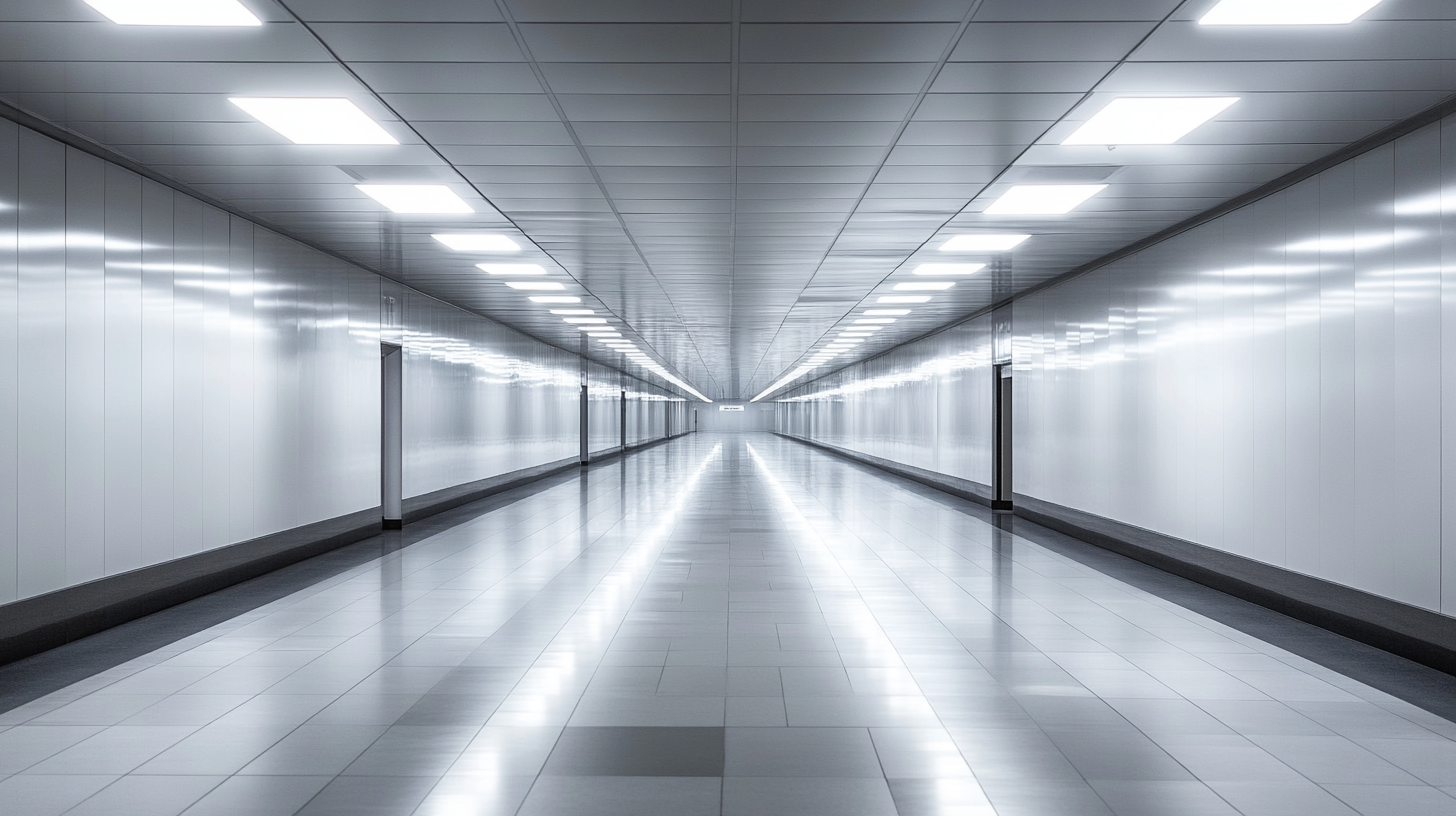Edison LED Lighting
Projects
Unlocking the Advantages of Best Linear Lighting for Global Procurement Success
In the ever-evolving landscape of global procurement, the significance of effective lighting solutions cannot be overstated. Linear lighting has emerged as a transformative element in various industries, offering not only aesthetic appeal but also functional advantages that enhance workspace productivity. However, challenges associated with different types of linear lighting can create obstacles for procurement professionals seeking optimal solutions. This blog aims to delve into the nuances of linear lighting, exploring its myriad benefits and addressing common problems faced in the selection process. By understanding these complexities, stakeholders can unlock the potential of linear lighting to drive success in their procurement strategies, ensuring they make informed decisions that align with their operational goals.

Key Benefits of Linear Lighting in Global Procurement Processes
Linear lighting is increasingly recognized for its pivotal role in enhancing global procurement processes. One of the primary benefits is its ability to provide uniform illumination, which is essential in large warehouses and distribution centers. This consistent lighting reduces the risk of errors during inventory checks and order fulfillment by ensuring that every corner of the space is equally visible. Enhanced visibility helps teams work more efficiently, promoting accuracy and reducing labor costs associated with mistakes.
Moreover, modern linear lighting solutions often include energy-efficient technologies such as LED modules. The use of energy-efficient lighting not only cuts down on electricity bills but also supports sustainability goals within organizations. By optimizing energy use, companies can reduce their carbon footprint and promote environmentally responsible operations. This commitment to sustainability can be a significant selling point in global procurement, as many businesses prioritize suppliers who demonstrate environmental stewardship. With these advantages, linear lighting emerges as a strategic asset in improving overall procurement success on an international scale.
Unlocking the Advantages of Best Linear Lighting for Global Procurement Success
Innovative Strategies for Effective Linear Lighting Selection
Choosing the right linear lighting solutions is essential for organizations striving for global procurement success. Innovative strategies for effective linear lighting selection involve a thorough understanding of both functional and aesthetic requirements. It is important to assess the specific needs of a space, considering factors such as the purpose of the lighting, energy efficiency, and the desired ambiance. By doing so, procurement professionals can align their purchases with the broader goals of sustainability and cost-effectiveness while enhancing overall workspace productivity.

Cost-Benefit Analysis of Linear Lighting vs. Traditional Options
When evaluating lighting solutions for procurement, a cost-benefit analysis of linear lighting compared to traditional options reveals significant advantages that can influence purchasing decisions. Traditional lighting systems, often bulky and energy-inefficient, come with higher operational costs and frequent maintenance requirements. In contrast,
linear lighting systems are designed to be sleek and energy-efficient, providing uniform illumination that reduces the number of fixtures needed. This not only lowers initial costs but also minimizes ongoing energy expenses, making it a more sustainable choice in the long run.
Moreover, the lifespan of linear lighting fixtures far exceeds that of traditional options, which means reduced frequency of replacements. This longevity directly translates to cost savings in both materials and labor for installation and maintenance. Additionally, many modern linear lighting systems offer advanced features such as dimmability and smart controls, which further enhance energy efficiency and user experience. By conducting a thorough cost-benefit analysis, procurement teams can clearly see how linear lighting not only meets aesthetic and functional requirements but does so while delivering significant savings and operational benefits.
Sustainable Practices in Linear Lighting for Procurement Success
In the realm of procurement, sustainable practices in linear lighting are becoming crucial not just for environmental responsibility but also for enhancing overall efficiency. According to a 2022 report by the International Energy Agency (IEA), commercial buildings account for over 30% of global energy consumption, making energy-efficient lighting a key area for cost savings and sustainability. Linear lighting, with advancements in LED technology, offers significant benefits, including reduced energy consumption by up to 75% compared to traditional lighting solutions. This not only lowers operational costs but also contributes to corporate sustainability goals.
Furthermore, incorporating sustainable linear lighting solutions can improve workplace productivity. A study by the Harvard T.H. Chan School of Public Health found that better lighting conditions can enhance employee performance by up to 20%. As organizations increasingly adopt green procurement strategies, selecting linear lighting that adheres to sustainability standards, such as Energy Star and overall lifecycle assessments, plays a pivotal role in procurement success. By aligning lighting choices with sustainability objectives, businesses can foster an eco-friendly image while simultaneously maximizing their operational efficiency and worker satisfaction.
Maximizing Efficiency: Integrating Technology with Linear Lighting Solutions
 In today's fast-paced global market, optimizing efficiency is paramount for success, especially in procurement processes. One innovative approach to achieving this is by integrating advanced technology with linear lighting solutions. These lighting systems not only provide consistent illumination across workspaces but also enhance the overall ambiance, contributing to improved focus and productivity. By leveraging smart lighting technology, businesses can tailor their lighting environments to align with operational needs, ensuring that every corner of the workspace is illuminated effectively while minimizing energy consumption.
In today's fast-paced global market, optimizing efficiency is paramount for success, especially in procurement processes. One innovative approach to achieving this is by integrating advanced technology with linear lighting solutions. These lighting systems not only provide consistent illumination across workspaces but also enhance the overall ambiance, contributing to improved focus and productivity. By leveraging smart lighting technology, businesses can tailor their lighting environments to align with operational needs, ensuring that every corner of the workspace is illuminated effectively while minimizing energy consumption.
Furthermore, the integration of IoT (Internet of Things) with linear lighting offers a myriad of benefits. Smart sensors can adjust lighting intensity based on occupancy, time of day, or even specific tasks being conducted. This adaptability significantly reduces energy waste and lowers operational costs, making it a win-win for both efficiency and sustainability. As organizations seek to streamline procurement processes, the inclusion of intelligent lighting systems presents a compelling case for enhancing work environments, ultimately driving success across global operations.
